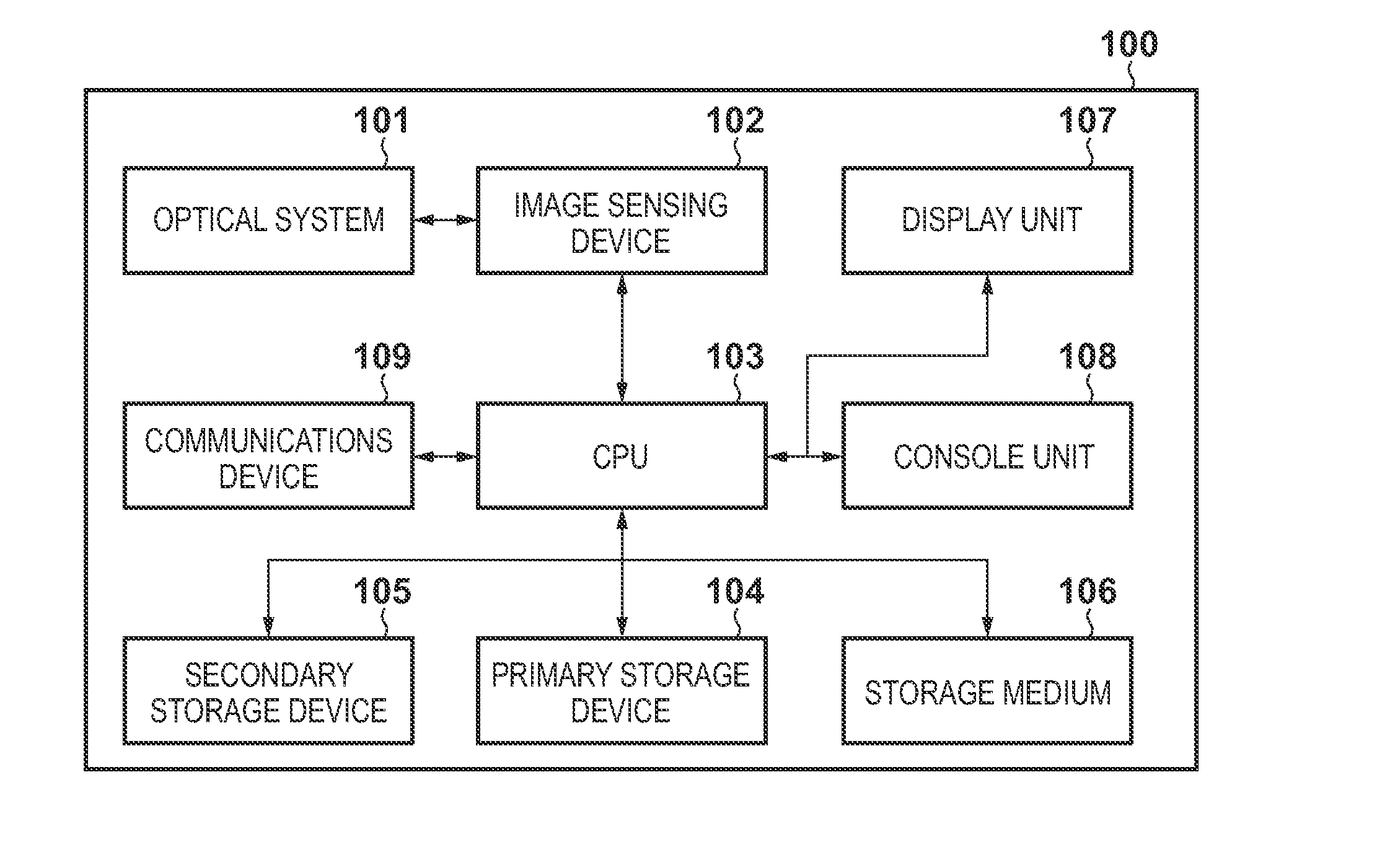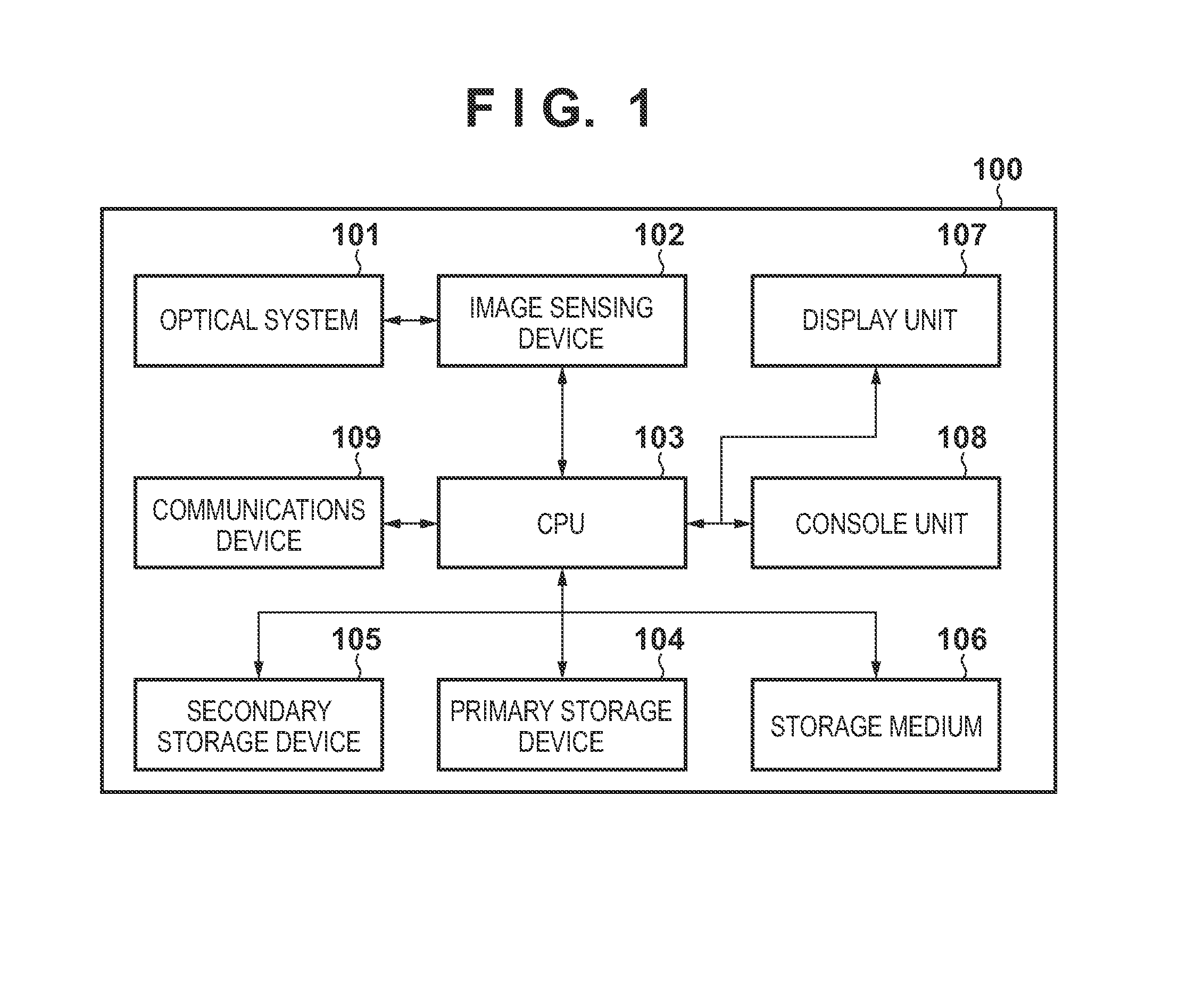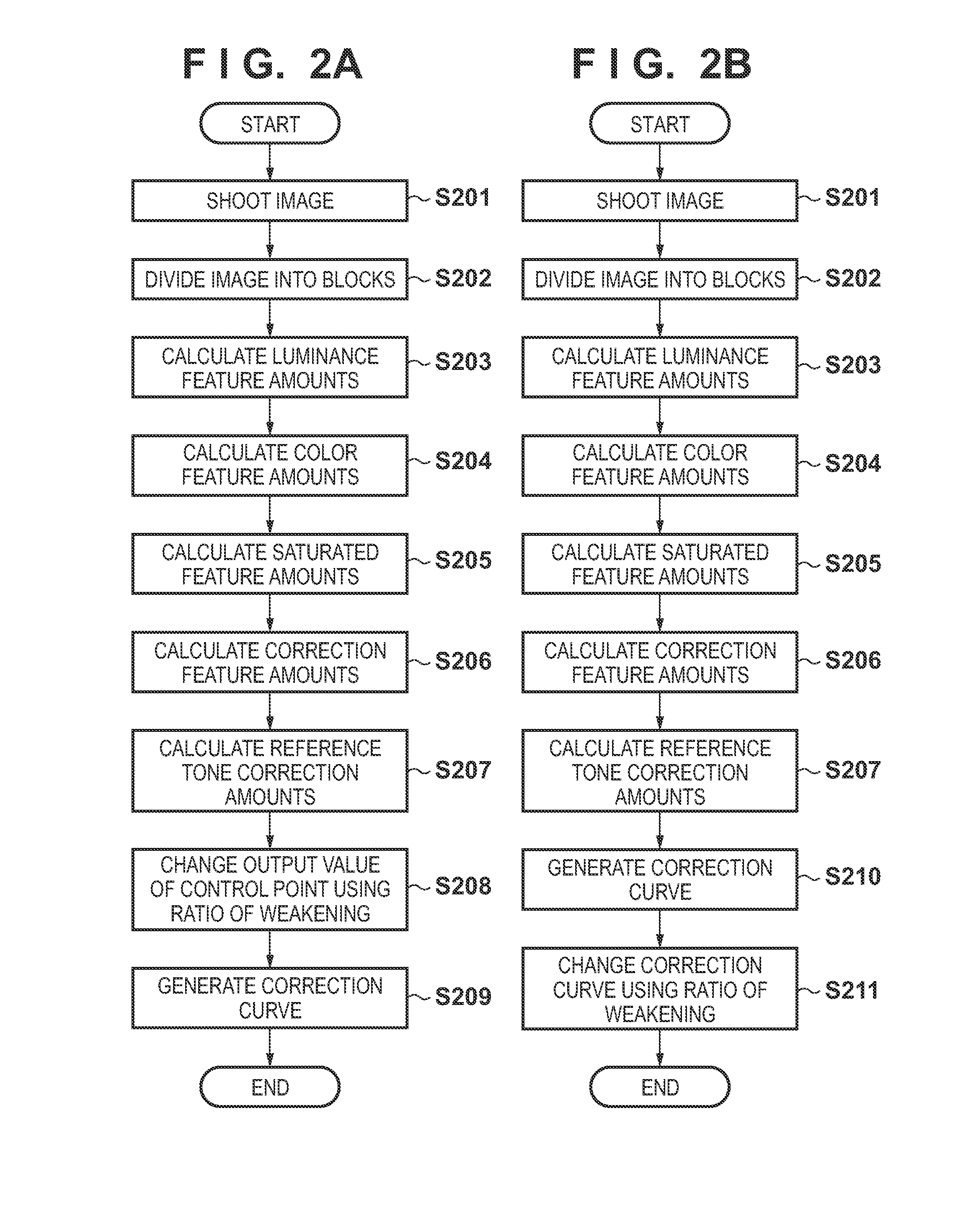Image processing apparatus and method
a technology of image processing and processing apparatus, applied in the field of image processing apparatus and method, can solve the problems of color deviation, color deviation, color deviation,
- Summary
- Abstract
- Description
- Claims
- Application Information
AI Technical Summary
Benefits of technology
Problems solved by technology
Method used
Image
Examples
first embodiment
[0027]In a first embodiment, description will be given of a method for calculating a saturated feature amount which corresponds to a color deviation tendency of a given scene of a photographic image and determining an amount of correction for actual use according to the saturated feature amount.
[0028]FIG. 1 is a block diagram showing a configuration of an image sensing apparatus 100 as an example of an image processing apparatus according to the first embodiment. The image sensing apparatus 100 can be a digital camera, digital video camera, or other apparatuses which can obtain image data by imaging a subject. In FIG. 1, an optical system 101 is made up of a lens, shutter, and diaphragm and is adapted to focus an appropriate amount of light from a subject onto an image sensing device 102 with an appropriate timing. The image sensing device 102 converts the light focused through the optical system 101 into image data. A CPU 103 performs various computations and controls various parts...
second embodiment
[0054]An example of weakening the amount of correction when there are a large number of regions which are likely to undergo color deviation has been described in the first embodiment, but a desirable ratio of weakening varies with the photography scene. Thus, in the second embodiment, the way of weakening the amount of correction is varied with the photography scene.
[0055]Examples of differences in the photography scene include the presence or absence of a face. Let us consider a case in which a correction curve for use to correct luminance Ain to luminance Aout has been calculated as shown by a broken line in FIG. 5B. FIG. 5B is an enlarged view of a section around Ain in the correction curve of FIG. 4C. If the screen contains a wide high-chroma region, but no face, human attention tends to be focused on the high-chroma region. Therefore, if correction of such a scene can result in color deviation of the high-chroma region, it is highly likely that the correction will go well if im...
third embodiment
[0065]The proportion of a region which is likely to undergo color deviation in the entire screen is checked in the first embodiment, but if, for example, extremely dark / light regions are contained in the screen, human attention tends to be drawn to a region of appropriate brightness excluding the extremely dark / light regions. For example, FIG. 7A shows a scene in which the region other than a high-chroma region is extremely dark. If the region other than a high-chroma region have some appropriate luminance as in the case of a normal landscape rather than having extremely low luminance such as shown in FIG. 7A and the high-chroma region makes up a small proportion of the entire screen, human attention is less prone to be drawn to the high-chroma region. In such a case, if the luminance of the region other than the high-chroma region is only slightly dark, corrections made to increase brightness of the dark region tend to produce a more desirable image. However, in FIG. 7A, the region...
PUM
 Login to View More
Login to View More Abstract
Description
Claims
Application Information
 Login to View More
Login to View More - R&D
- Intellectual Property
- Life Sciences
- Materials
- Tech Scout
- Unparalleled Data Quality
- Higher Quality Content
- 60% Fewer Hallucinations
Browse by: Latest US Patents, China's latest patents, Technical Efficacy Thesaurus, Application Domain, Technology Topic, Popular Technical Reports.
© 2025 PatSnap. All rights reserved.Legal|Privacy policy|Modern Slavery Act Transparency Statement|Sitemap|About US| Contact US: help@patsnap.com



